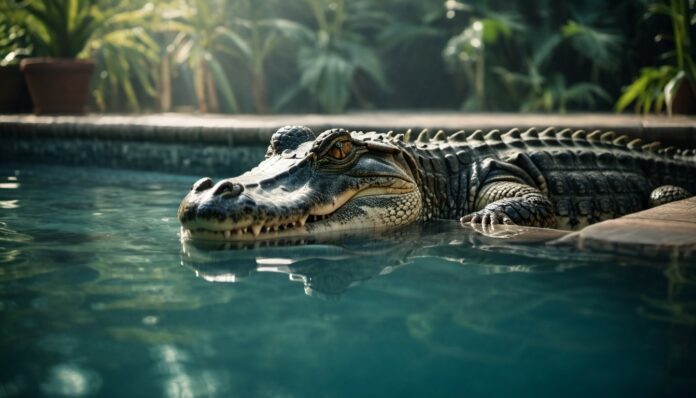Crocodiles are large, predatory reptiles known for their powerful jaws, armored bodies, and aquatic lifestyles. They belong to the family Crocodylidae and are found in tropical regions of Africa, Asia, the Americas, and Australia. Crocodiles have been around for millions of years, making them one of the oldest surviving species on Earth.
Why are They Called Crocodiles?
The name “crocodile” comes from the Greek word “krokodeilos,” which means “pebble worm” or “stone man.” This name likely refers to the crocodile’s rough, scaly skin, which resembles a pebble-covered surface. Over time, the term evolved to “crocodilus” in Latin and eventually to “crocodile” in English.
Interesting Facts About Crocodiles
1. Ancient Survivors
Crocodiles have existed for over 200 million years, dating back to the time of the dinosaurs. Their ancient lineage makes them one of the most resilient and enduring species on the planet.
2. Powerful Bite
Crocodiles have the strongest bite of any animal in the world. Their jaws can snap shut with a force of over 3,700 pounds per square inch, which is powerful enough to crush bones.
3. Lifespan and Growth
Crocodiles can live for 70 to 100 years, depending on the species. They continue to grow throughout their lives, with some species reaching lengths of up to 23 feet (7 meters) and weighing over 2,000 pounds (907 kilograms).
4. Ambush Predators
Crocodiles are ambush predators, meaning they lie in wait for their prey to come close before launching a swift and deadly attack. They often submerge themselves in water with only their eyes and nostrils visible, making them nearly invisible to unsuspecting prey.
5. Unique Hunting Technique
Crocodiles use a technique called the “death roll” to subdue their prey. Once they have caught an animal in their jaws, they spin their bodies rapidly to tear off chunks of flesh, making it easier to consume.
6. Saltwater Adaptations
Saltwater crocodiles, the largest species, can live in both freshwater and saltwater environments. They have specialized glands in their tongues that help excrete excess salt, allowing them to thrive in coastal areas and estuaries.
7. Complex Communication
Crocodiles are known for their complex communication methods. They use vocalizations, body postures, and chemical signals to communicate with each other. Hatchlings, for example, emit high-pitched sounds to alert their mothers when they are ready to hatch.
8. Strong Parental Care
Female crocodiles exhibit strong parental care. They build nests and guard their eggs fiercely against predators. Once the eggs hatch, mothers carry their young to the water in their mouths and continue to protect them for several weeks.
9. Efficient Swimmers
Crocodiles are excellent swimmers, capable of reaching speeds of up to 20 miles per hour (32 kilometers per hour) in short bursts. They use their powerful tails to propel themselves through the water.
10. Temperature-Dependent Sex Determination
The sex of crocodile hatchlings is determined by the temperature of the nest during incubation. Warmer temperatures typically produce males, while cooler temperatures produce females.
11. Largest Reptile
The saltwater crocodile holds the title of the largest living reptile. These giants can grow up to 23 feet (7 meters) in length and weigh over 2,000 pounds (907 kilograms).
12. Smallest Crocodile
The smallest crocodile species is the dwarf crocodile. These crocodiles grow to a maximum length of about 5 feet (1.5 meters) and typically weigh between 40 and 70 pounds (18 to 32 kilograms).
13. Camouflage Experts
Crocodiles have excellent camouflage, which helps them blend into their surroundings. Their rough, scaly skin can appear as rocks or logs in the water, making it difficult for prey to spot them.
